 Are you using Facebook video ads for your business?
Are you using Facebook video ads for your business?
Want to improve your conversions?
Well-structured video ads command viewers' attention and prompt them to take action.
In this article you'll discover five steps to crafting the perfect Facebook video ad.
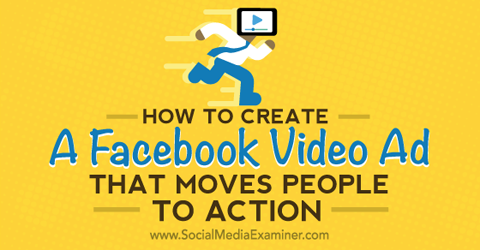
Listen to this article:
Where to subscribe: Apple Podcasts | Spotify | YouTube Music | YouTube | Amazon Music | RSS
Why Facebook Video Ads?
Facebook's head of ad product Ted Zagat recently said that a year or two from now, Facebook will be mostly video. This is likely the reason why we're seeing so many great new features for video advertisers.
When you create a new ad campaign in Power Editor, you can choose from a number of objectives for your video ads: Clicks to Website, Page Post Engagement, Video Views and Website Conversions.

Facebook is continuously adding new options as well. For example, Facebook automatically creates custom audience lists of people who've viewed your video ad.
Until recently, these lists would be created only if you chose Video Views as the campaign objective. But now, if you use another objective (Website Conversions, for example), these video engagement lists will also be created automatically.
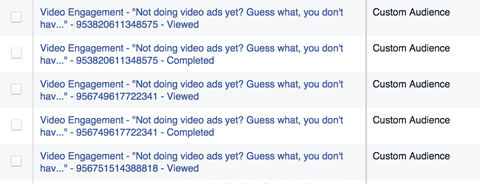
This means you can easily retarget these groups of people later, similarly to retargeting your website visitors.
Writing a Video Ad Script
To create a video ad, you have a lot of different options. Of course, you can use a recording of yourself (or hire someone to do it for you), but you don't have to. Using videos with animated text, images and music can be equally (if not more) effective.
To create strong ads, it's important to get your targeting right, and communicate a powerful message.
This article walks you through a framework you can use to create the perfect Facebook video ad script with only five lines of text. For each line, you have a specific goal: grab attention, build interest, elicit desire, create conviction or add a call to action.
Get World-Class Marketing Training — All Year Long!
Are you facing doubt, uncertainty, or overwhelm? The Social Media Marketing Society can help.
Each month, you’ll receive training from trusted marketing experts, covering everything from AI to organic social marketing. When you join, you’ll also get immediate access to:
- A library of 100+ marketing trainings
- A community of like-minded marketers
- Monthly online community meetups
- Relevant news and trends updates
To guide you through this method, you'll follow the creation of an example video ad for a free recipe guide, with the goal of growing your email list.
#1: Grab Attention
How do you grab attention in today's attention-deficit world? Start with a question.
You want to immediately focus on the main pain point or desire that your target audience is experiencing right now. What are your customers' biggest problems or struggles? What are they frustrated about? What are their biggest wishes?
For this step, it's important to focus not only on the problem or desire, but also on how that makes people feel. When you do this correctly, you have what's called an audience-to-problem match. You want people to instantly recognize themselves and say, “Hey, that's me!” If they do, they'll likely be curious about what else you have to say.

The ad above tackles a typical frustration that a lot of people can relate to: struggling to eat healthy.
#2: Build Interest
Once you've successfully captured your viewers' attention, you need a way to keep it so they'll watch the rest of your ad.
In this second phase of the script, hint at your solution by creating an open loop. You want to paint a picture for viewers that it is indeed possible to get rid of that problem or struggle. At the same time, you don't want to reveal what the actual solution is. Only hint at it for now.
This ad creates interest by using the words “new” and “easy.”

Discover Proven Marketing Strategies and Tips
Want to go even deeper with your marketing? Check out the Social Media Marketing Podcast! Publishing weekly since 2012, the Social Media Marketing Podcast helps you navigate the constantly changing marketing jungle, with expert interviews from marketing pros.
But don’t let the name fool you. This show is about a lot more than just social media marketing. With over 600 episodes and millions of downloads each year, this show has been a trusted source for marketers for well over a decade.

Can you see how this approach is creating an open loop in your viewers' minds? If they're still watching at this point, they'll likely want to know what that new and easy method is.
#3: Cultivate Desire
For this line of the script, create desire for your product or service. Describe your offer in a way that makes it sound amazing and like something viewers must have.
To do this, focus on a specific benefit of your product, or how it's different from the alternatives out there. How-to and step-by-step guides are always popular because they help people solve specific issues.
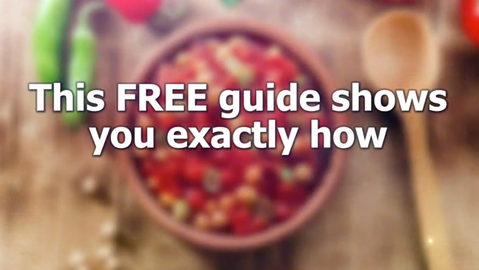
If you combine the benefit with the word “free,” your offer starts to sound pretty appealing.
#4: Create Persuasion
If your viewer is still hooked at this point, this means that you're targeting the right audience, with the right problem and solution. Now the question is, how do you convince them to take action?
In Dr. Robert Cialdini's book Influence, he talks about six psychological triggers that entice people to take action: reciprocity, commitment (and consistency), social proof, liking, authority and scarcity. Keep these triggers in mind when you're writing your script.
For video ads, you'll likely use the triggers for social proof, authority or scarcity the most. Focus on how a well-known expert endorses your product to use authority as a trigger. Focus on the temporary availability of your offer to leverage scarcity.
The ad below goes for social proof: “79,894 people have already tried it.”
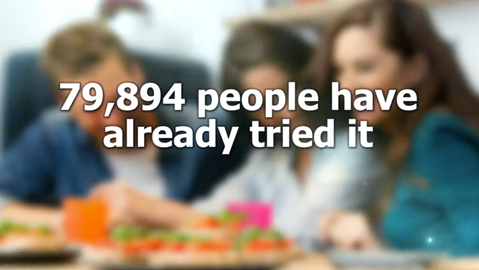
Revealing that many people have already tried your method or product is a great way to convince viewers to take a look at it.
Of course it's essential that the statements you make in your ad are 100% true. Being honest in your advertising is vital to building a good relationship with current and future customers.
#5: Add a Call to Action
The last line of the script is where you finally call your viewer to action. Even though the call to action is an important step, it's easy to overlook it.
The idea behind the call to action is simple: Tell people exactly what you want them to do. Even if the action seems obvious to you, it helps to be specific about what viewers should click.
Sites like Facebook often change their navigation (for advertisers as well as users), so it's important to be clear about where to click in your ad.
When you set up your ad in Power Editor, you can choose from various types of calls to action, and easily integrate it into your ad script. After you select a type, the button will show up in your post when you run it as an ad.

To make your video ad consistent with that choice, mention the call to action button in the script, too.

This line has one simple purpose: to make sure viewers click the Download button.
Conclusion
The idea behind using a script-writing framework isn't that you have to always use five lines. What's important is to make sure that each part of your video ad has a specific purpose.
You can record yourself on video, use animated text and images or use a combination. Whichever format you choose, make sure that viewers keep watching the video, and that they take the action you want them to take.
What do you think? Have you tried any of these tactics to create a Facebook video ad script? What techniques work for you? Please share your thoughts in the comments below.
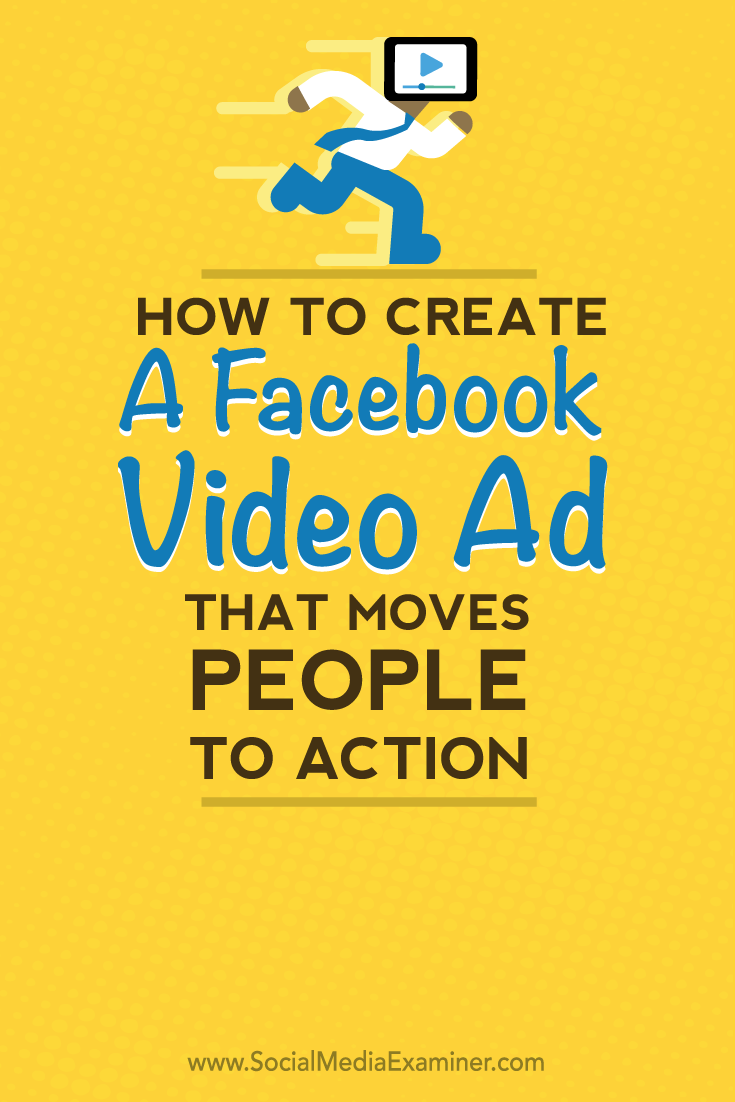
Attention Agency Owners, Brand Marketers, and Consultants

Introducing the Marketing Agency Show–our newest podcast designed to explore the struggles of agency marketers.
Join show host and agency owner, Brooke Sellas, as she interviews agency marketers and digs deep into their biggest challenges. Explore topics like navigating rough economic times, leveraging AI, service diversification, client acquisition, and much more.
Just pull up your favorite podcast app, search for Marketing Agency Show and start listening. Or click the button below for more information.

